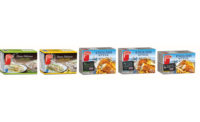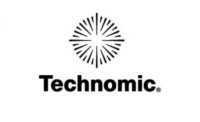People may be cooking more in instant pots and air fryers, but the microwave remains the kitchen appliance most people use every day — probably multiple times each day. With the strong demand for convenience, consumers love microwaveable entrees and side dishes. In fact, the global market for microwaveable food is projected to expand at a compound annual growth rate of 4.8 percent through 2026 due to demand for ready-to-eat food, according to a report from EMR.
As a result, meat, poultry, and seafood companies are constantly developing easy-prep products and looking for packaging that will perform in the microwave. The EMR report divides products into three categories: frozen, chilled, and shelf-stable with chilled being the largest and shelf-stable the smallest.
In the shelf-stable category, StarKist presents its StarKist Creations Microwavables in a microwaveable pouch. The line of shelf-stable seasoned tuna with vegetables and grains can be eaten at room temperature or microwaved for 30 seconds. Flavors include Spicy Rice & Beans, Tomato Basil, Latin Citrus, and Thai Green Curry.
 In the frozen category, Aqua Star launched two product lines in 2020. Designed as a quick meal solution, the Aqua Star MicroSteam Seafood Bowls are housed in a proprietary film package that locks in steam to cook food evenly with absolutely no fishy odor.
In the frozen category, Aqua Star launched two product lines in 2020. Designed as a quick meal solution, the Aqua Star MicroSteam Seafood Bowls are housed in a proprietary film package that locks in steam to cook food evenly with absolutely no fishy odor.
“We’ve created a product line that people can stock up on and have on hand when working from home with a house full of family,” says Dirk Leuenberger, president, and CEO of Aqua Star. “At the same time, we wanted something that gave people a bit of joy and comfort, as well as a healthy meal.”
Combining premium ingredients, delicious flavors, and wholesome recipes, MicroSteam Seafood Bowls go from the freezer to the microwave to the table in five minutes or less. Described as restaurant-quality, the 8-ounce meals combine sustainable shrimp, pollock, or salmon certified by Best Aquaculture Practices or the Marine Stewardship Council combined with vegetables and spices and served over pasta, rice, or grits. The six flavors include Shrimp Scampi, Shrimp Ramen, Shrimp Pad Thai, Shrimp & Grits, Salmon Teriyaki, and Sesame Ginger Wild Alaskan Pollock.
Aqua Star’s other 2020 product introduction, MicroSteam Seafood Meals, features a microwaveable skin-packed vacuum film package that expands as the food heats, locking in steam so each frozen meal is ready to eat in six minutes. This product line also includes certified seafood plus ingredients such as mafalda pasta, sriracha, red quinoa, and yellow carrots.
Leuenberger says the meals “offer no-stress preparation, high-quality ingredients and take the guesswork out of figuring out what to eat—and [answer] the proverbial question, ‘how to cook seafood.’” Flavors include BBQ Sriracha Wild Salmon, Lemon Herb Wild Cod, Roasted Garlic Salmon, Cajun-Style Tilapia, and White Wine Shrimp. The vacuum skin-pack features environmentally friendly trays that are recyclable and produced using less energy and material.
With both consumers and brand owners looking for more sustainable products, a lot of effort is being put into developing alternatives to plastic. As a result, renewable plant-based designs are finding an audience. One wood fiber-based material eliminates polyethylene terephthalate and contains such a small amount of polypropylene that it can be recycled in most existing carton packaging recycling streams. The lightweight paperboard lowers the carbon footprint of each tray. When a biodegradable coating is used instead of the PP, the trays are compostable in industrial composting operations.
Another fiber-based alternative to plastic trays features a removable liner, one-piece continuous sealing flange, and high-quality printing. Hermetic sealing provides shelf life equivalent to conventional plastic trays. The dual-ovenable trays can be shipped formed or flat. When shipped flat, trays result in lower transportation emissions compared with formed plastic trays. After cooking, it’s easy to remove the liner and recycle the tray in the paper/corrugated waste stream.





Report Abusive Comment